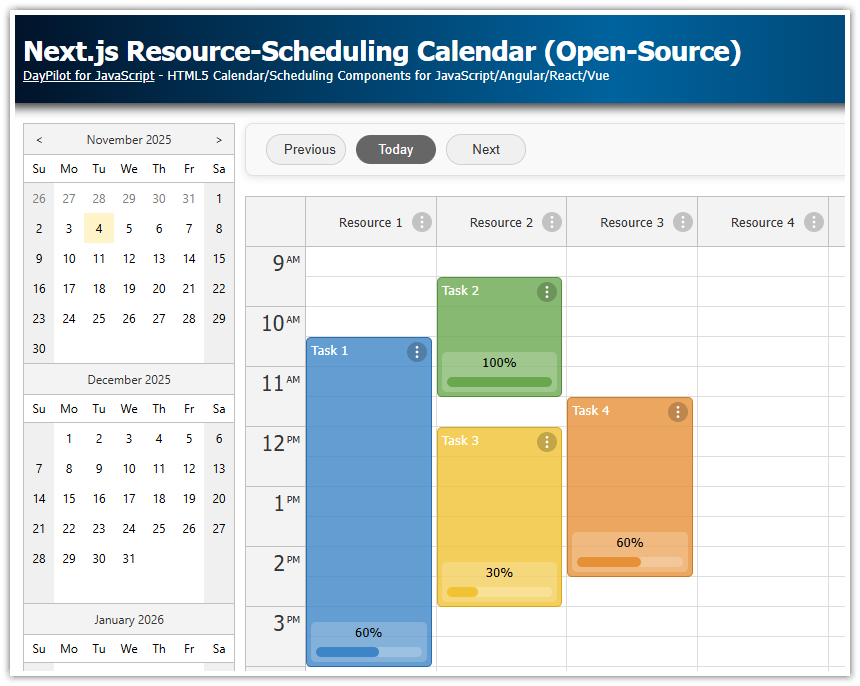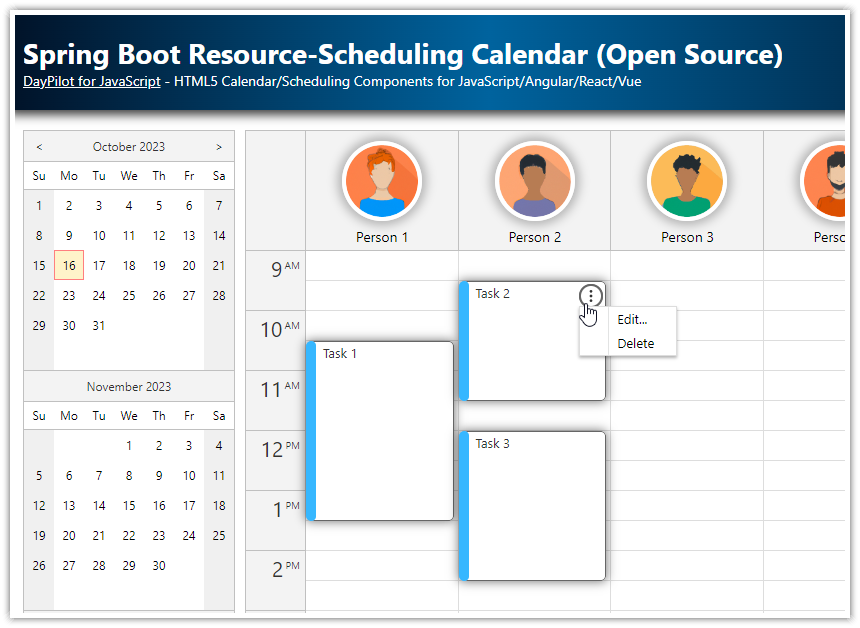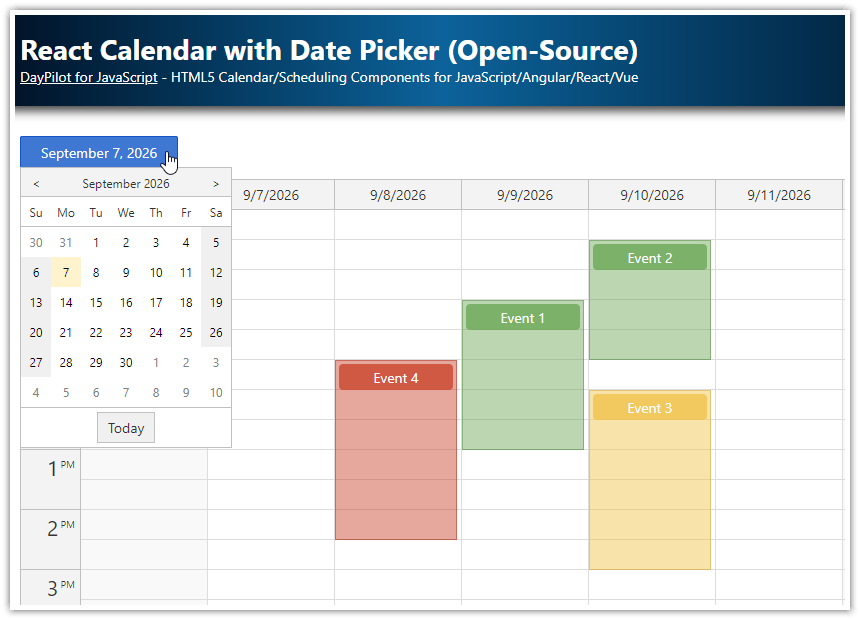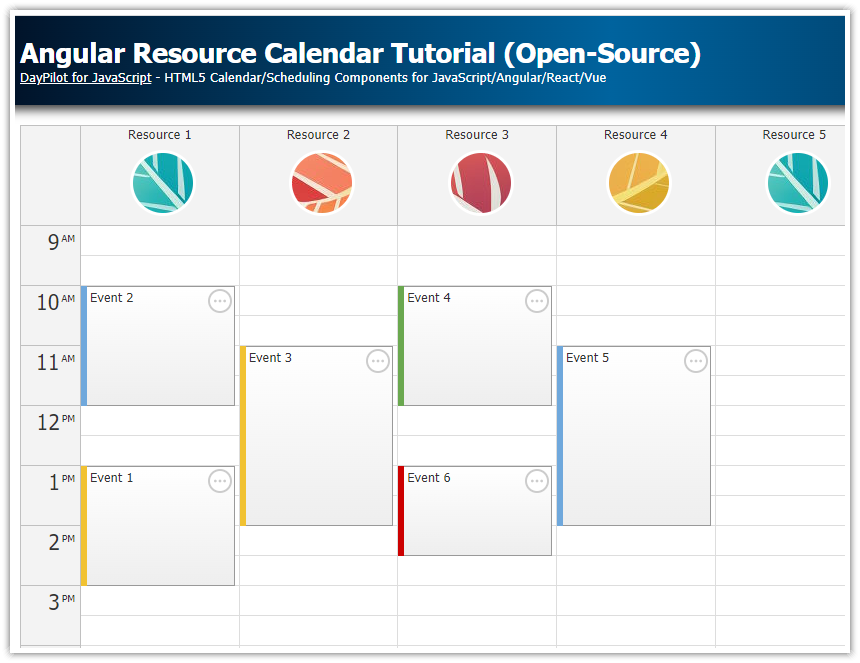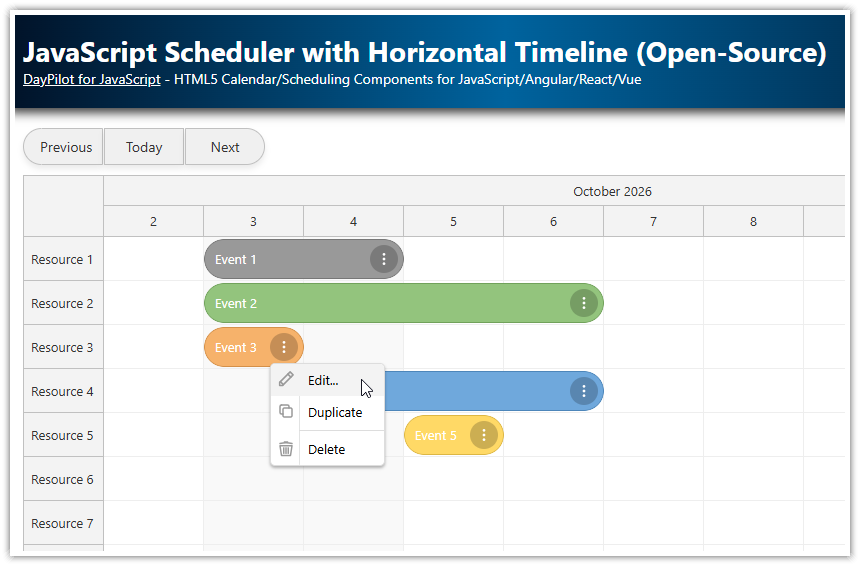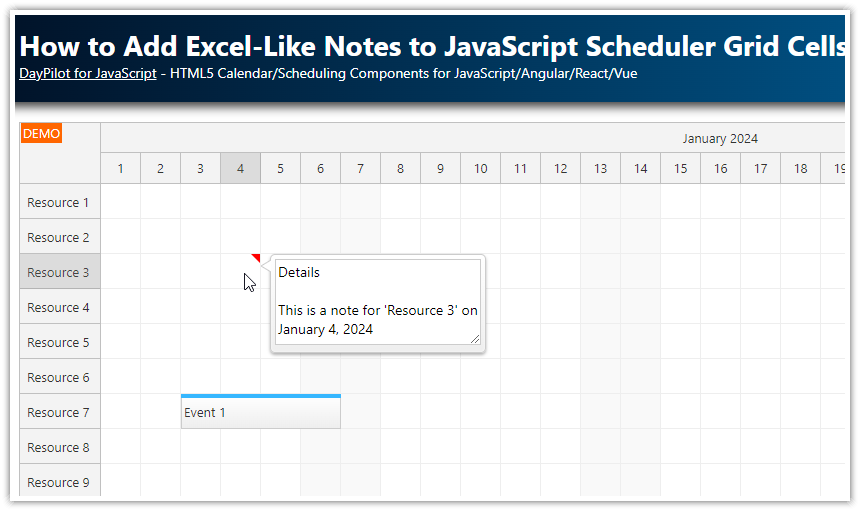Overview
Add a calendar icon to the upper-left corner of the JavaScript Scheduler component.
Add an event handler that opens a popup date picker on click.
Update the timeline of the Scheduler when a new date is selected.
Built using the open-source DayPilot Lite for JavaScript scheduling library.
Adding a Calendar Icon to the Upper-Left Corner
We create an active area inside the scheduler’s upper-left corner header in onBeforeCornerRender.
Dimensions:
20 px × 20 px.Centering:
calc(50% - 10px)positions the icon in the middle of the 40 px‑high corner cell.Icon: an SVG symbol (
#calendar) from the DayPilot icon set (daypilot.svg) inherits the current text color, so it looks natural in both light and dark themes.Pointer cursor: so users know it is clickable.
const scheduler = new DayPilot.Scheduler("dp", {
onBeforeCornerRender: args => {
args.areas = [
{
top: "calc(50% - 10px)",
left: "calc(50% - 10px)",
width: 20,
height: 20,
style: "cursor: pointer",
symbol: "icons/daypilot.svg#calendar",
onClick: args => {} // we will open the date picker here
}
];
},
// ...other configuration
});
scheduler.init();Opening the Date Picker on Click
To handle the click event, we attach an onClick handler to the active area:
The date picker is anchored to the area by passing
target: args.originalEvent.currentTarget.We disable automatic reading/writing of the value with
resetTarget: falseso the icon itself is not overwritten by the selected date.The current scheduler
startDateis used as the initial selection.When the user clicks a day, we close the picker and call
scheduler.update({ startDate: args.start }), which updates the Scheduler range to start with the newly chosen date.
onClick: args => {
const picker = new DayPilot.DatePicker({
target: args.originalEvent.currentTarget,
resetTarget: false,
date: scheduler.startDate,
onTimeRangeSelect: args => {
args.preventDefault(); // keep the icon intact
picker.close();
scheduler.update({ startDate: args.start });
}
});
picker.show();
}Giving the Picker a Subtle Shadow
The default navigator component is flat. A little depth makes it stand out:
.navigator_default_main {
box-shadow: 0px 0px 10px 2px rgba(0,0,0,0.2);
}Full Source Code
Below is the complete example, including a minimal resource/event dataset so you can copy‑paste and run it immediately:
import {DayPilot} from "@daypilot/daypilot-lite-javascript";
const scheduler = new DayPilot.Scheduler("dp", {
timeHeaders: [
{groupBy: "Day", format:"MMMM d, yyyy"},
{groupBy: "Hour", format: "h tt"}
],
scale: "Hour",
days: 7,
startDate: DayPilot.Date.today(),
cellWidth: 60,
onTimeRangeSelected: async (args) => {
const scheduler = args.control;
const modal = await DayPilot.Modal.prompt("Create a new event:", "Event 1");
scheduler.clearSelection();
if (modal.canceled) { return; }
scheduler.events.add({
start: args.start,
end: args.end,
id: DayPilot.guid(),
resource: args.resource,
text: modal.result
});
},
treeEnabled: true,
onBeforeCornerRender: args => {
args.areas = [
{
top: "calc(50% - 10px)",
left: "calc(50% - 10px)",
width: 20,
height: 20,
style: "cursor: pointer",
symbol: "icons/daypilot.svg#calendar",
onClick: args => {
const picker = new DayPilot.DatePicker({
target: args.originalEvent.currentTarget,
resetTarget: false,
date: scheduler.getViewport().start,
onTimeRangeSelect: args => {
// don't write the value to the `target` element
args.preventDefault();
picker.close();
scheduler.update({startDate: args.start});
}
});
picker.show();
}
}
]
}
});
scheduler.init();
const app = {
init() {
const resources = [
{name: "Resource 1", id: "R1"},
{name: "Resource 2", id: "R2"},
{name: "Resource 3", id: "R3"},
{name: "Resource 4", id: "R4"},
{name: "Resource 5", id: "R5"},
{name: "Resource 6", id: "R6"},
{name: "Resource 7", id: "R7"},
{name: "Resource 8", id: "R8"},
{name: "Resource 9", id: "R9"},
];
const events = [];
scheduler.update({resources, events});
}
};
app.init();You can also download the complete project that includes the dependencies using the “Download” link at the top of the tutorial.
 DayPilot
DayPilot
